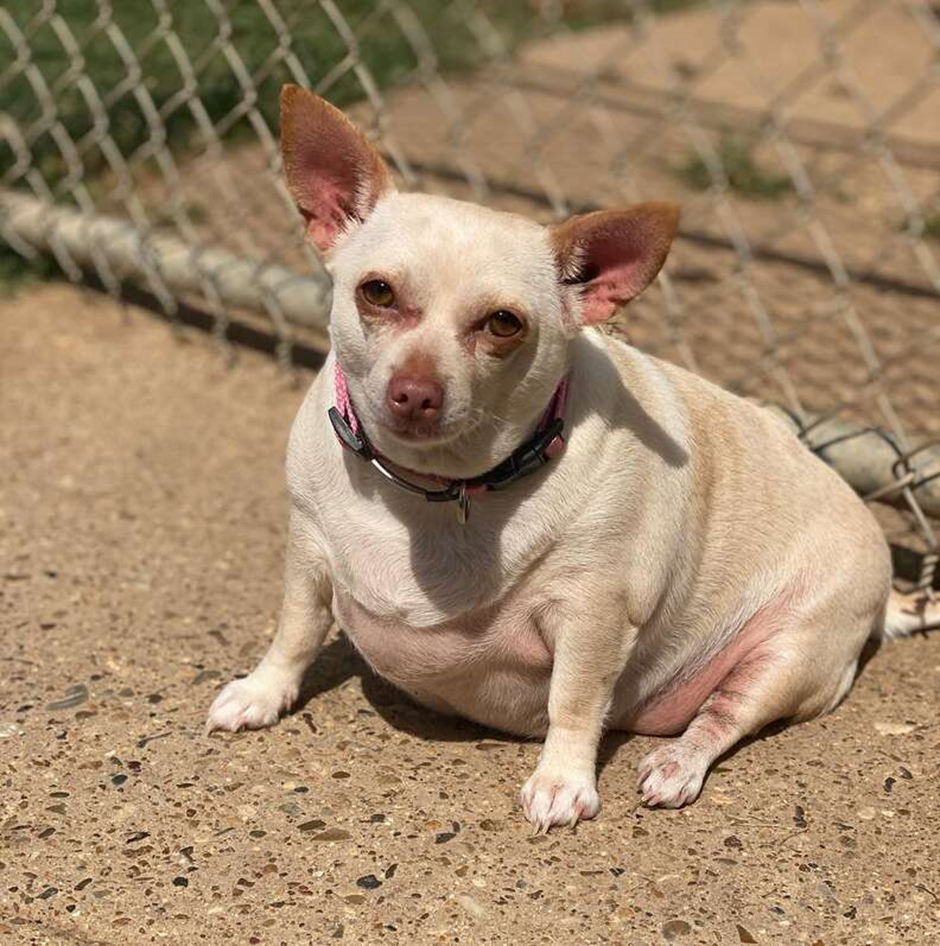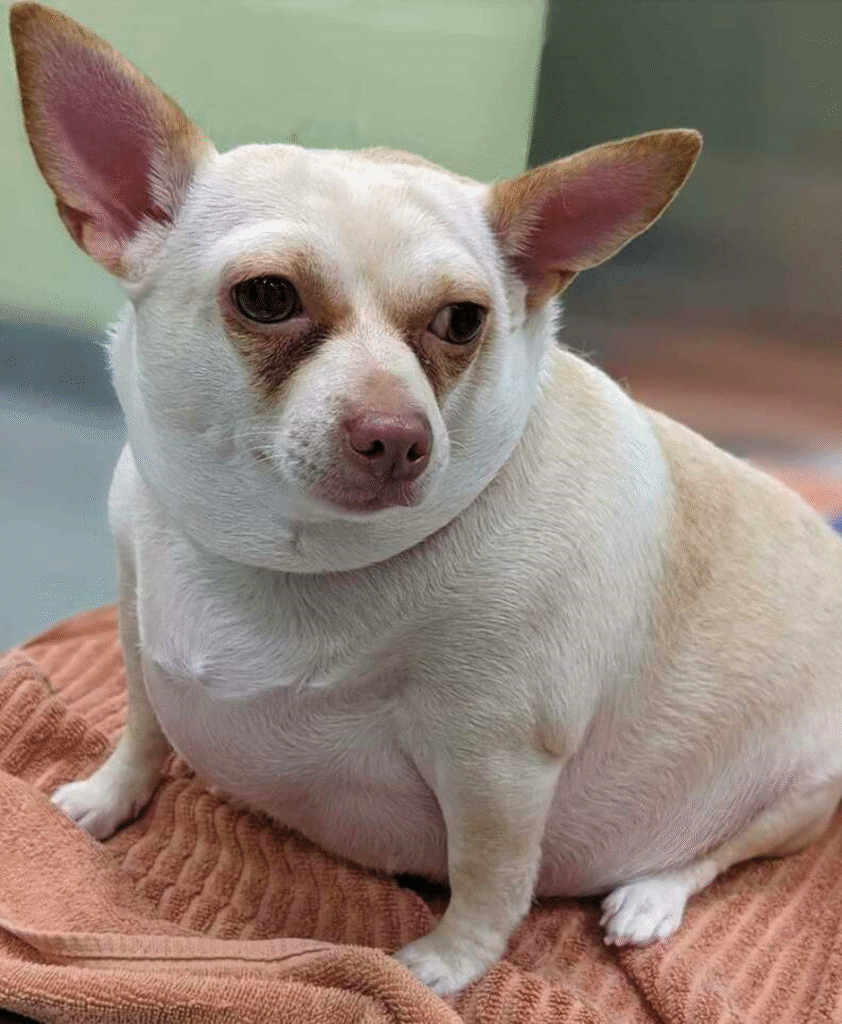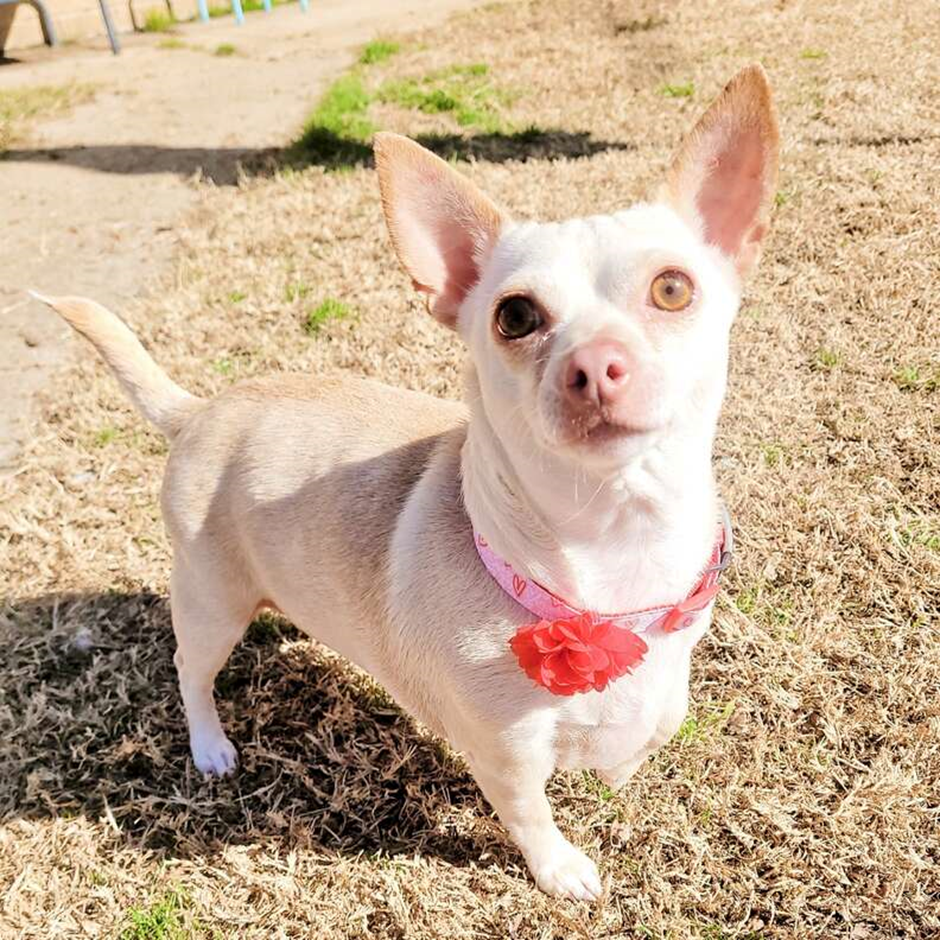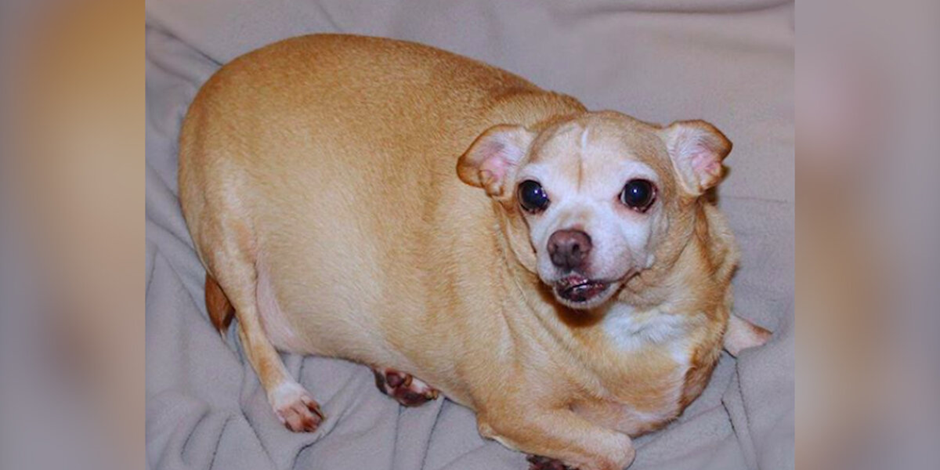When the rescue group pulled her from a hoarding situation, they weren’t sure what to call her. She wasn’t just overweight; she was shaped like a small, fuzzy, tan melon with a face. Her tiny legs, designed for quick, confident trotting, were completely buried by her own body. They settled on Daisy, because she was round, solid, and utterly incapable of movement.
Daisy was a Chihuahua, but she didn’t look like the feisty, lean dogs of her breed. She weighed in at a staggering fifteen pounds—more than double what a healthy Chihuahua should be. She was so heavy that walking was a painful, labored shuffle, punctuated by gasps. Her life was defined by the area directly beneath the food bowl, and her spirit was, understandably, completely defeated.
Her foster mom, a woman named Clara, knew immediately that this wasn’t just a simple diet; this was a complete transformation of both body and mind. The first goal wasn’t weight loss; it was mobility. The vet warned Clara that if Daisy didn’t lose weight, she wouldn’t make it to her fifth birthday without severe joint damage and heart failure.
Clara started with baby steps, literal baby steps.

The first attempts at exercise were heartbreaking. Clara would gently place Daisy in the middle of a rug, and the dog would simply lie down, panting, her dark eyes looking up with profound betrayal. Clara didn’t push. Instead, she started with something Daisy couldn’t resist: curiosity.
Clara moved Daisy’s food bowl—now strictly controlled with prescription diet kibble—across the room, just three feet away. The first day, it took Daisy nearly five minutes, a Herculean effort of pushing her huge body forward inch by inch. But she did it.
Over the next few weeks, that distance grew. Three feet became ten feet. Ten feet became a slow loop around the living room. Clara didn’t use toys or fancy equipment; she used gentle encouragement and the reward of healthy food. It was a slow, grueling war against gravity and habit.
The weight loss started agonizingly slowly—a few ounces here, half a pound there. But as the pounds began to melt away, the dog beneath the bulk started to emerge. Her little legs appeared from under the cushion of fat. Her tail, which had always been clamped down, started to give a tiny, tentative wag.

The moment of the “Glow Up” arrived six months into her journey. Daisy reached her target weight of seven pounds. She was, quite literally, half the dog she used to be. The change wasn’t just in the numbers; it was in her attitude.
She was no longer the defeated, sullen creature Clara had found. She was a Chihuahua. She barked at the mailman. She demanded to be carried upstairs only so she could run down them. She discovered the joy of sprinting across the yard, her formerly buried legs now moving with the speed and sharp turns of a champion racer. Her energy was boundless, her spirit resurrected.
The transformation was so profound that Clara often laughed when she saw the ‘before’ photos. The tiny, trim dog now curled up in her lap, light as a feather and radiating confidence, was barely recognizable as the sullen blob from six months prior.
Daisy taught everyone that saw her story a powerful lesson: transformation isn’t about some grand, sudden gesture. It’s about the consistency of small, difficult steps taken every single day. She had fought her way back to health, trading a life sentence on the rug for a future full of joyful, effortless movement. She had lost half her weight, but in doing so, she had gained her entire life back.



